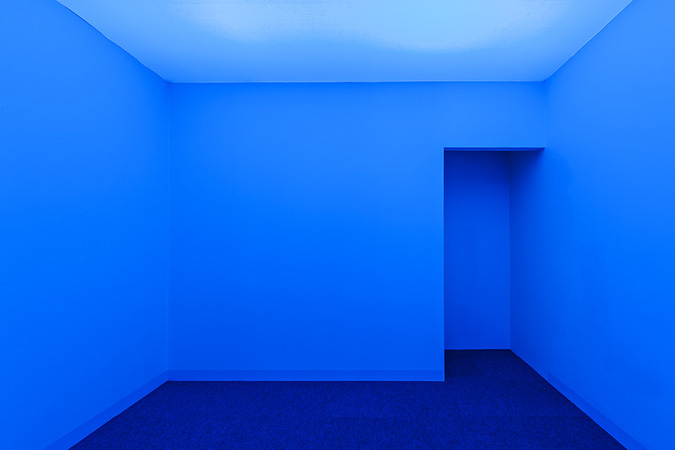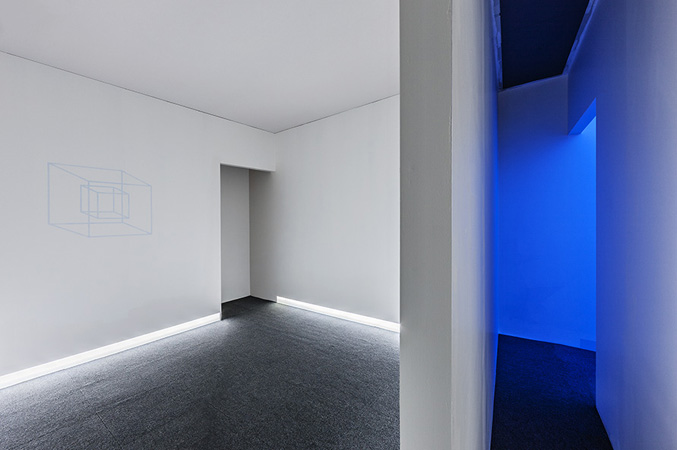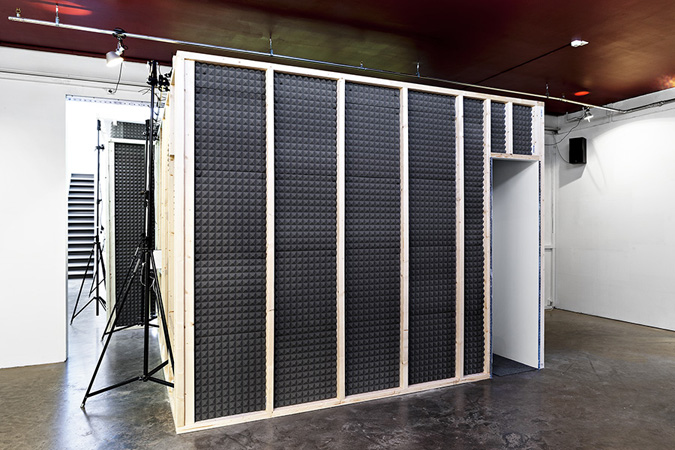Toril Johannessen
Wednesday, 8 January 2014
Work from Teleportation Paradigm at Unge Kunstneres Samfund
“TELEPORTED
You may have had the experience of waking up in a strange place, not realizing where you are, or for a short time thinking that you are somewhere quite different? At the Teleportation Paradigm exhibition, everything has been organized for such a spatial confusion to take place – in a monumental light installation based on an experiment that has previously only been carried out on rats.
The work is the result of collaboration between artist Toril Johannessen and neuroscientist Karel Jezek of the Kavli Institute for Systems Neuroscience, NTNU, Trondheim. Johannessen has often been involved in interdisciplinary work, working with programmers, engineers, physicists and geologists, but this is the first time she has worked so closely with a scientist. Jezek and Johannessen close in on each other’s disciplines, but they do not try to blur the boundaries by letting the researcher act as an artist or vice versa.
MAP” IN THE BRAIN
As you enter a new room, the place cells in your brain create and save a spatial memory. A “map” of the room takes shape. When you step outside, it is put aside, but if you return, it will be retrieved. The light installation Teleportation Paradigm consists of three rooms the public may enter, a greatly enlarged version of the laboratory experiment «teleportation paradigm» that Jezek and his colleagues performed on rats in order to study the brains’ memory of place. At UKS it is inflated to human size, and the audience enter the same situation as the rats.
The rats/people first spend time in rooms A and B, then in C. The lighting in A differs from that in B, as it did in the original neuro-experiment. Each room has its own discreet audio tracks. Thus, in rooms A and B two different maps are stored in our brains. Room C is programmed to switch between elements of A and B, and both of these “maps” are retrieved. It is this moment, as you are “teleported”, which is of interest to the researchers: The transition between two memories. This transition may be experienced as a spatial disorientation.
While Jezek and the other researchers could measure and map electromagnetic signals in the brain, but not inquire after the test subjects’ experience of “teleportation”, at UKS people can experience, but not measure.
Inside the installation there is a mural of a classic optical illusion, a so-called Necker cube. The cube is also central to the drawings at the exhibition and to the book Unseeing.”





